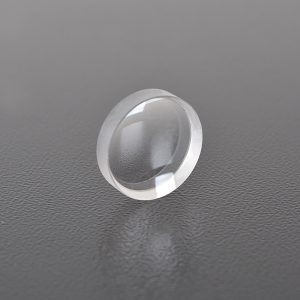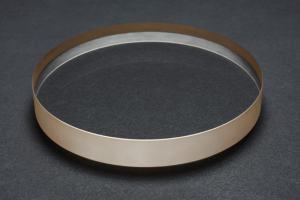
Micro Lens Factory: the Miniaturization Revolution of Optical Technology
With the continuous advancement of science and technology, the application of optical technology in various fields is becoming more and more extensive, especially in the fields of consumer electronics, medical equipment, autonomous driving and virtual reality, the demand for micro lenses is growing rapidly. As an important part of the optical manufacturing industry, the micro lens factory is gradually becoming the core force to promote the miniaturization revolution of optical technology. This article will explore in depth the technical characteristics, application fields and future development trends of the micro lens factory.
1. Technical characteristics of micro lens factory
The micro lens factory focuses on the design and manufacture of optical components with extremely small size and high precision. These lenses are usually a few millimeters or even smaller in diameter and are widely used in micro cameras, fiber optic communications, laser equipment and other fields. The core technologies of the micro lens factory include:
1. Precision processing technology
The manufacture of micro lenses requires extremely high precision, and ultra-precision processing technologies such as CNC machine tools, laser processing and lithography are usually used. These technologies can ensure that the surface smoothness and shape accuracy of the lens reach the nanometer level to meet the requirements of optical performance.
2. Material selection
The material selection of micro lenses is crucial, and commonly used materials include optical glass, quartz, plastic and silicon. Different materials have different optical properties, such as refractive index, transmittance and heat resistance, so it is necessary to select the appropriate material according to the specific application scenario.
3. Coating technology
In order to improve the optical performance of the lens, micro lens factories usually use coating technology to coat multiple layers of thin film on the surface of the lens to reduce reflection, increase transmittance or achieve specific optical functions, such as anti-reflection, anti-ultraviolet, etc.
4. Automated production
With the advancement of Industry 4.0, micro lens factories have gradually introduced automated production lines to achieve efficient and stable production through robots, sensors and intelligent control systems. This not only improves production efficiency, but also reduces human errors and ensures product consistency.
2. Application fields of micro lenses
Micro lenses are widely used in many high-tech fields due to their small size, lightness and high performance:
1. Consumer electronics
The camera modules in devices such as smartphones, tablets and laptops are inseparable from micro lenses. With the continuous improvement of mobile phone camera pixels, the manufacturing accuracy and optical performance of micro lenses are also constantly improving to meet the needs of high-definition shooting.
2. Medical equipment
In the medical field, microlenses are widely used in endoscopes, microscopes, and laser surgical equipment. The high precision and tiny size of microlenses enable medical equipment to perform diagnosis and treatment more flexibly and accurately.
3. Autonomous driving
Autonomous vehicles rely on sensors such as LiDAR and cameras to perceive the surrounding environment. Microlenses play a key role in these sensors, helping vehicles achieve high-precision environmental perception and decision-making.
4. Virtual reality (VR) and augmented reality (AR)
VR and AR devices require high-quality microlenses to provide a clear and realistic visual experience. The optical performance of microlenses directly affects the user’s immersion and experience.
5. Fiber optic communication
In fiber optic communication systems, microlenses are used to focus and couple optical signals to ensure efficient signal transmission. With the development of 5G and future 6G communication technologies, microlenses will be more widely used in fiber optic communications.
3. Future development trends of microlens factories
1. Higher precision and smaller size
With the continuous advancement of optical technology, the size of microlenses will be further reduced and the precision will be further improved. In the future, the manufacture of nano-level lenses will become possible, which will bring more possibilities for the development of optical technology.
2. Multifunctional integration
The future micro-lens will not only be a single optical component, but a composite device integrating multiple functions. For example, the lens can be integrated with sensors, lasers or electronic components to form a multifunctional optical module to meet the needs of complex application scenarios.
3. Green manufacturing
With the enhancement of environmental awareness, micro-lens factories will pay more attention to green manufacturing and reduce energy consumption and environmental pollution in the production process. The use of environmentally friendly materials and clean production technology will become an important trend in the future.
4. Intelligent production
With the development of artificial intelligence and big data technology, micro-lens factories will gradually realize intelligent production. Through data analysis and machine learning, factories can optimize production processes and improve product quality and production efficiency.
Conclusion
As an important promoter of the miniaturization of optical technology, micro-lens factories are providing key optical components for multiple high-tech fields. With the continuous advancement of technology, the application scope of micro-lenses will be further expanded, and their manufacturing processes will become more precise and intelligent. In the future, micro-lens factories will continue to lead the innovation of optical technology and make greater contributions to the development of human society.
Hanzhong Brisun Optics Co., Ltd. Is the high precision optical element manufacturer provides customized production of Various optical lenses, including spherical lens, cylindrical lens, optical window, mirror, prism, filter, metal base mirror and other high-precision optical elements. The base materials include various optical glass, fused quartz, calcium fluoride (CaF2), zinc selenide (ZnSe), germanium (GE), silicon (SI), sapphire, metal and other materials. And provide antireflective film, high reflection film, spectroscopic film, metal film and other optical coatings.
Welcome to OEM and Purchasing!


